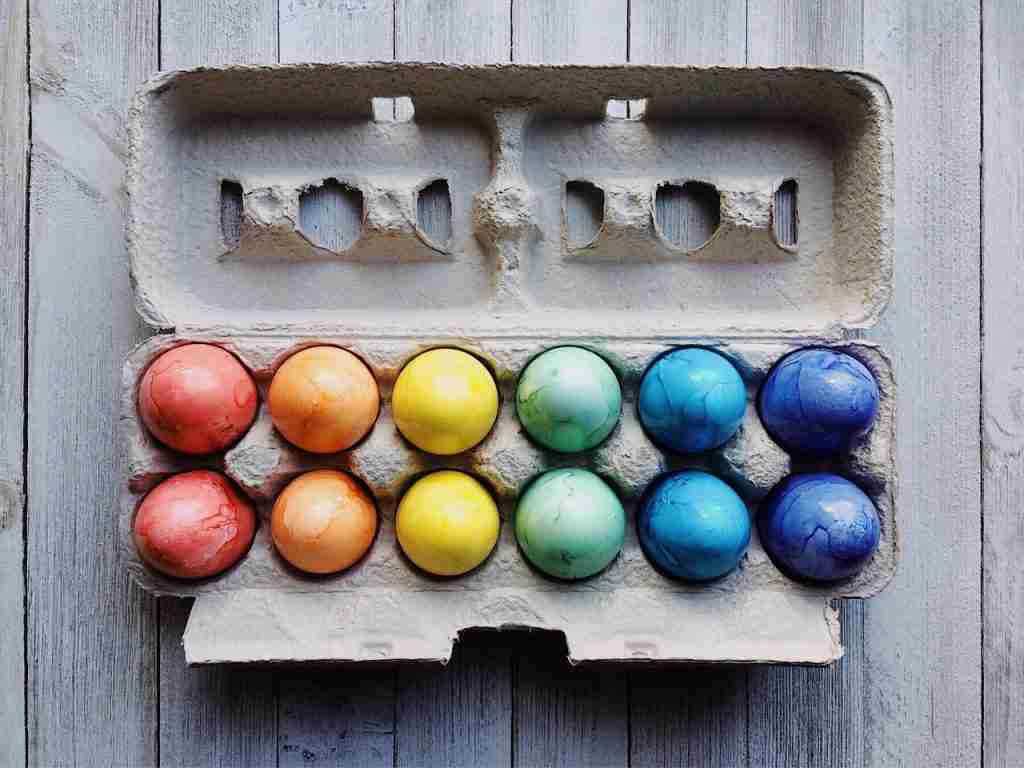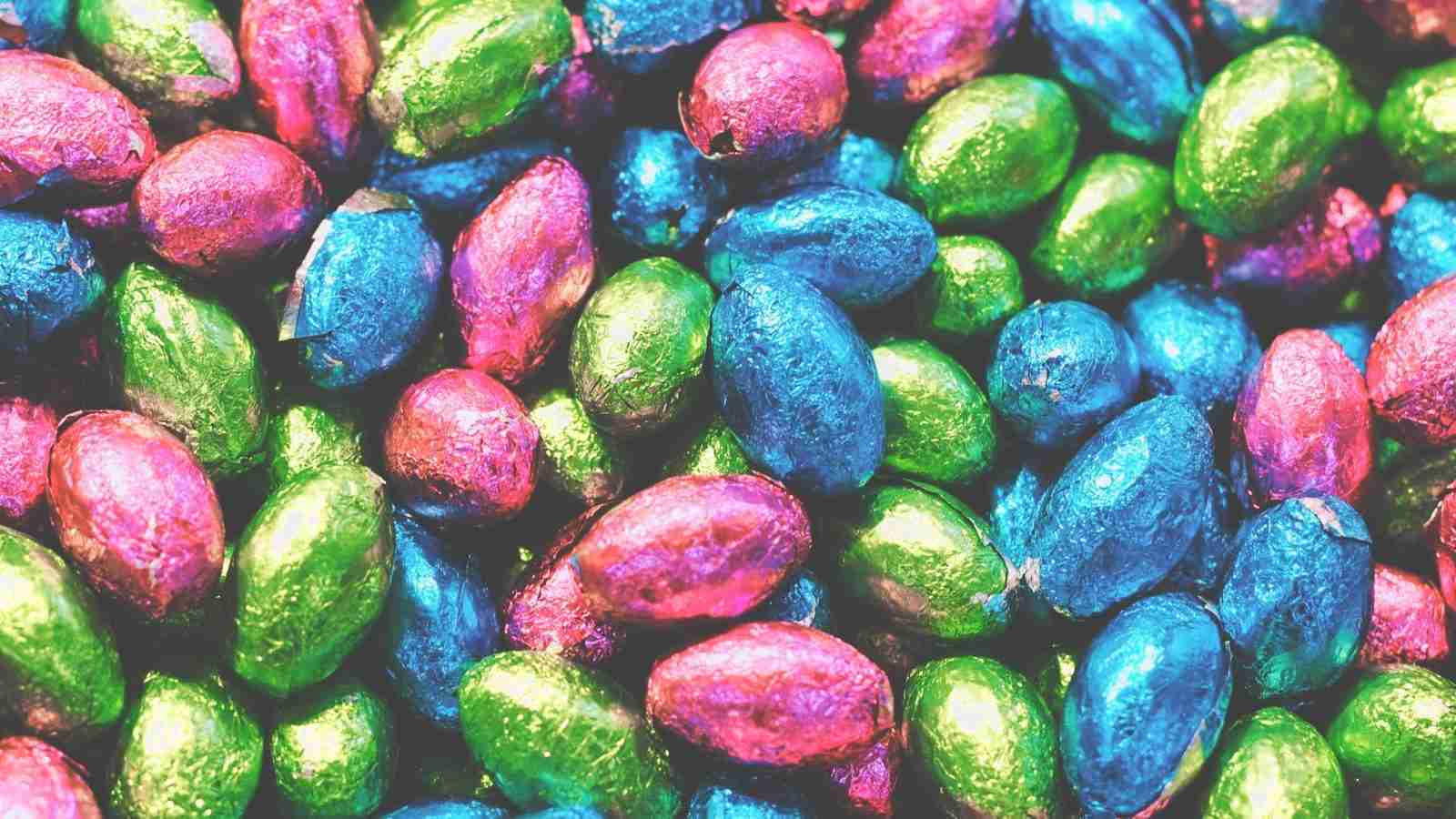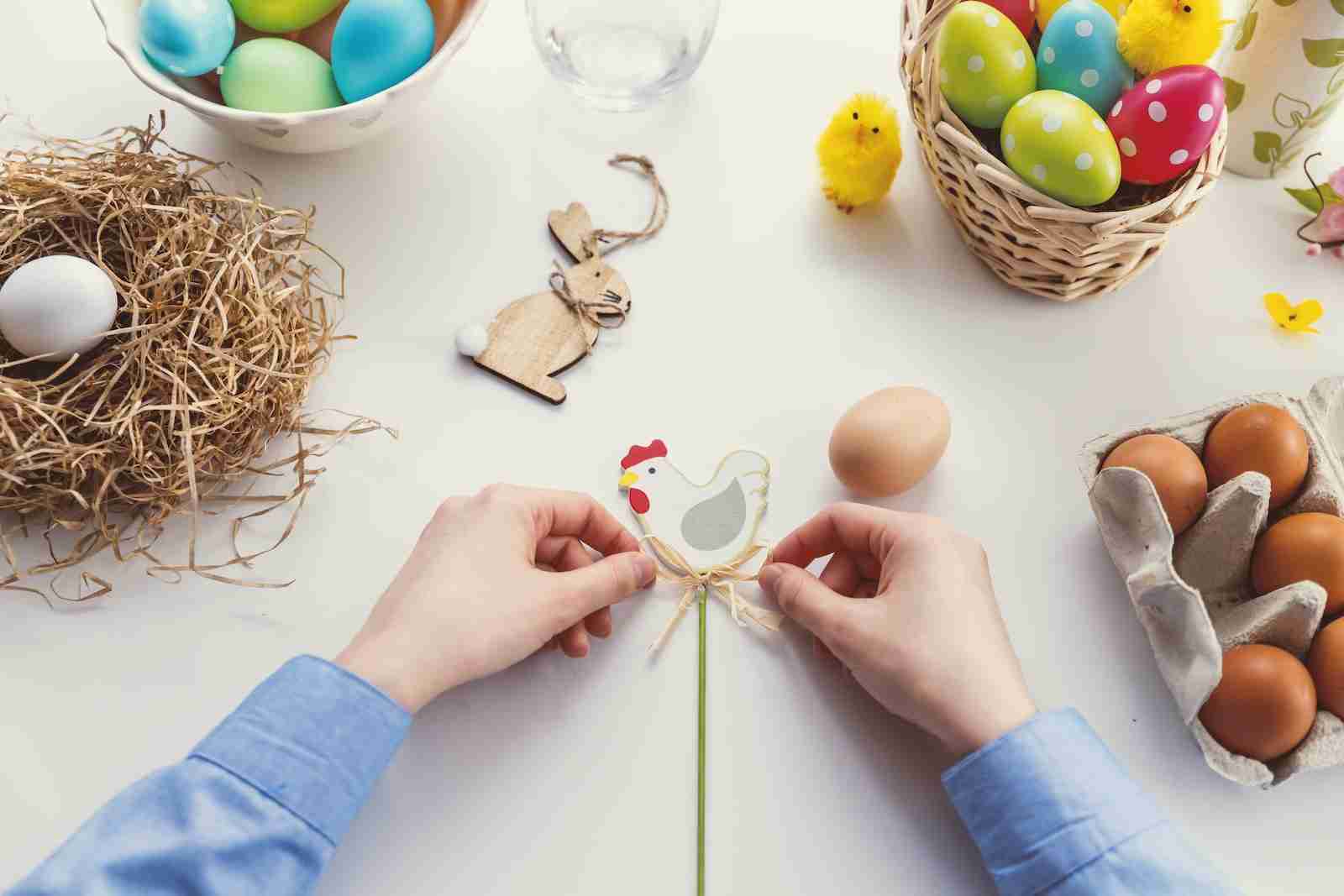24 Fun Facts About Easter: Eggs-posed (2023)
1. The Word “Easter” is derived from the Anglo-Saxon goddess of spring Eostre.
The word “Easter” has an interesting and deep origin. The derivation of this special day actually points to ancient mythology.
More precisely, it originates from the Anglo-Saxon goddess of spring, Eostre. It is said that this goddess is the one who was originally celebrated when the day was established centuries ago.
Though its roots run deep in mythological times, many now celebrate Easter as a crucial part of their intellectual, religious, and spiritual beliefs.
Whatever the modern occasion may mean to those celebrating today, its ancient seed can be traced back to Eostre and her message of new beginnings for the year ahead.
2. The Date of Easter changes each year, as it is determined by the Lunar Calendar.
Easter is always celebrated on a Sunday, however, the exact date that Easter falls each year changes. This is because the date of Easter is determined according to the lunar calendar.
The lunar calendar follows the cycles of phases of the Moon, using 12 synodic months which take about 29.53 days each to cycle through in one year. So over a few years, this will eventually cause Easter to ‘drift’ in terms of dates throughout a 3-year period.
The team of astronomers and scientists at the National Full Moon Calendar monitor all changes for religious groups who measure their holidays and observances around it.
In 2023, Easter Sunday will be observed on April 9 this year. This follows the Gregorian calendar. It should be noted, however, that many Eastern Orthodox churches use the Julian calendar rather than the Gregorian. Eastern Orthodox Easter will be celebrated on Sunday, April 16, 2023. (Julian calendar date converted to the Gregorian calendar).
3. The Easter bunny is a symbol of new life and has its roots in German folklore.
The Easter bunny is a beloved symbol for the celebration of Easter celebrated in many cultures around the world. Originating in German folklore, the Easter Bunny is a symbol of new life, springtime, and fertility.
With roots in German traditions celebrating their version of an Easter hare, symbolism connected to its bountiful gift baskets is reflective of blessings bestowed upon followers.
It is even thought that decorating eggs may be tracing its origins back to pre-Christian traditions that were done as offerings to Central European gods.
The mythical Rabbits’ descent to bringing goodies has brought about joy and excitement around the celebrations we participate in each year at Easter time.
4. The tradition of giving Easter eggs dates back to the ancient Egyptians, Persians, and Greeks.
The tradition of giving Easter eggs has evolved throughout the centuries. It most likely traces back to the ancient Egyptians, who were known for decorating bunny-shaped mango wood with brightly colored dyes.
Later, during the Persian and Greek times, painted stone eggs were presented as gifts at special occasions.
In time, this gained popularity and was combined with European customs, such as painting colorful feathers or golden stars on real eggshells.
Hard-boiled eggs eventually became a symbol of new life and rebirth in early Christianity as they represented features closely identifiable with Jesus Christ’s resurrection.

5. Easter is the oldest Christian holiday and is celebrated by over 2 billion people worldwide.
Easter is widely celebrated across the world as one of the oldest Christian holidays known to humankind.
Every year, this joyous occasion brings together more than 2 billion people in celebrations ranging from solemn religious services to lighthearted holiday feasts.
The true essence of Easter lies not only in the technical origins it has cultivated throughout time, but rather remains in those cored notions of togetherness and gratitude shared by its participants around the globe.
6. The first chocolate Easter eggs were made in Europe in the early 19th century.
Easter celebrations are deeply rooted in 19th-century Europe – a time when the first chocolate Easter eggs were made. Crafting the egg out of well-loved chocolate ingredients was an inventive yet intriguing concept that quickly gained popularity.
As these chocolate Easter eggs became a symbol of festive joy, people across Europe rushed to buy them for their own holiday celebrations.
Chocolate eggs easily rival traditional treats due to their unique look and delicious flavor. Today, these decadent delicacies count as one of Easter’s staple traditions!
7. The custom of dyeing Easter eggs is believed to have originated in Ancient Mesopotamia.
Easter eggs, a beloved symbol of Easter around the world and a favorite holiday pastime of many, may have a longer and more storied history than one might think.
According to records found in ancient Mesopotamia—both an area in modern-day Iraq as well as one at the heart of several early empires—the custom of dyeing eggs has deep roots.
This practice holds significant symbolism for Christians due partially to their roots in the celebration of Jesus’ resurrection.
By commemorating this momentous event with dyed eggs—and, by extension, rebirth and fertility—the ancient festivities were adapted for Christians, making what was once old new again.
8. In Greece, red eggs are traditionally exchanged on Easter Sunday to symbolize the resurrection of Jesus.
On Easter Sunday in Greece, the celebration is marked by an exchange of red eggs. This custom is steeped in symbolism, as it speaks to the idea of resurrection.
The significance of these eggs goes far beyond a colorful egg hunt, as they represent not only the process experienced by Jesus at his rising but also the hope and new beginnings that come with this event.
Individuals exchange these eggs with each other as a means of being reminded of and celebrating the spirit of renewal that takes place on this holiday.

9. The Easter parade is a tradition that began in New York City in the late 19th century.
The Easter parade is a tradition that has its roots in New York City. It commenced during the late 19th century when the streets of the city were filled with things to marvel at – from prizes awarded to decorated carriages, horse riders, fancy hats, and ornate marching bands.
In the initial years of this festivity, people would put on their very best frills with cattails and laurels working together to showcase a kaleidoscope of vibrant colors.
Additionally, it was common to find children escorting little floral carts around town as beautifully garbed onlookers cheered them on. These age-old festivities are still known to take place every year in the heart of Manhattan.
10. In Spain, it is traditional to eat a dessert called Torrijas on Easter Sunday, which is similar to French toast.
Spaniards look forward to a traditional Easter treat called Torrijas in celebration of the religious festival. This sweet treat is similar to the ever-popular French toast, making it widely enjoyed!
Found on almost every dining table on Easter Sunday, this warm and sweet magnum opus usurps the breakfast platter and nestles against Easter wedges of cheese, membrillo, and scarlet slices of tortilla.
Whether Casseroled with almonds over a bed of crested honey or sprinkled in cinnamon atop oozing strawberries, variations vary from family to family; a collective knowledge that ushers Spain into yet another year!
11. The Traditional Easter meal in Italy is a dish called Agnello Pasquale, which is a lamb-shaped pastry filled with sweet ricotta cheese.
Easter dinner in Italy holds a special tradition of preparation and presentation. A signature dish called Agnello Pasquale is crafted with care, typically looking like a delicate little lamb with a head, hooves, and bed of wool.
An interesting twist on this traditional recipe is the sweet ricotta cheese that is tucked inside.
This tasty filling combines smoothly with light layers of crisp dough to create a pasta masterpiece bursting with flavor from every bite.
The small size allows for one or two servings that are devoured in short minutes, regarded as an iconic part of the Easter celebrations.
12. In the Philippines, Easter is celebrated with a religious procession called the “Salubong,” which reenacts the meeting of Mary and Jesus after his resurrection.
In the Philippines, the Easter holiday holds special cultural significance. A main event during the celebration is a processional reenactment known as the “Salubong“.
This processional reenacts one of the Bible’s most poignant stories—the reunion of Mary and Jesus following his resurrection. As part of this event, live actors assume the roles of both characters and recreate this beautiful moment with crowds marching along an accompanying songs.
It is only through their incredible representation that we can come to understand such a powerful moment in time.
13. In Germany, it is traditional to light large bonfires on Easter Sunday to symbolize the end of winter and the arrival of spring.
As part of the Easter celebration in Germany, it is customary to light raging bonfires. Spanning for miles, these tellurian torches signify an end to the freezing winter seasons and usher in the hopeful beginnings of spring.
Illuminating open sky horizons with a glimmer reminiscent of sparks from the sun, these outbursts linger over the night reflecting effigies of what could be gloriously lost underneath piles of frigid temperatures and hardened frost mountains.
A reminder that even death-like descents are not invincible, keeping Germans inspired by peace-loving pagan beginnings entrenched in basic intuitions both ancestral and natural– intuitive guidance that dates back since 441AD.
14. The White House holds an annual Easter Egg Roll on the Monday following Easter Sunday.
Every year, the White House plays host to an egg-cellent tradition: the Annual Easter Egg Roll. Taking place always on the Monday after Easter Sunday, it’s one of the most anticipated events of springtime!
It precedes Easter with a flurry of fun and family-friendly activities including egg rolling competitions, cookies, and crafts. The event is open to families that have signed up to celebrate with the President, allowing them access to lawn games, music, and special guests as they celebrate this iconic moment in American history.
The White House lawn is symbolic at this festive time of year, stirring up feelings of excitement across its own beloved stands. Moreover, the biggest part of this annual tradition continues its commitment to emphasizing multicultural affairs – a genuine challenge in our culturally diverse nation!
15. The First Chocolate Easter bunnies treat in Germany was launched in the early 19th century.
For many years, Easter customs involved the decorating of hard-boiled eggs. However, in the early 19th century Germany began to make a revolutionary new sweet: chocolate Easter bunnies!
It was an intriguing idea that gave children and adults alike something special on this joyous holiday.
Biting off the ears makes for a special treat each Easter season, as chocolate Easter bunnies become classics for gifts and holiday feasts!
Every year these enchanting confections bring a unique feeling of nostalgia to those who partake in enjoying them.
16. In Sweden, it is traditional to decorate Easter eggs with intricate designs and patterns.
In Sweden, it is customary to celebrate the Easter season by decorating eggs in detailed and artistic designs. Colorful and beautiful designs adorn the eggs and remind us of the joy associated with this time of year.
Various symbols and geometric shapes enthrall egg painters, whether they are young children or old family members. It is an anticipation that cannot be described as many eagerly await the unveiling of their unique masterpieces!
Gathering together to choose patterns and going through several intense stages of preparation brings families closer, resulting in timeless memories.

17. In the Orthodox Church, Easter is also known as Pascha, which means “Passover” in Greek.
In the Orthodox Church, Easter is referred to by another name: Pascha. This Greek word carries a lot of weight with it, as it translates directly to “Passover”.
Celebrating not only Jesus’ rising from death, but also his passage through suffering towards everlasting peace and temporal freedom.
An opportunity for individuals of all walks of life to reflect upon sacrifice and redemption and see spirituality in a new light.
Pascha exists right at the walls of our faith – a beacon for us in times of turbulence that brings fiery hope.
18. In Ethiopia, the Coptic Orthodox Church celebrates Easter with a colorful and joyful procession called Fassika.
In Ethiopia, the Coptic Orthodox Church observes Easter in a festive and vivacious manner. Their joyous traditions involve a procession called Fassika, and attendants to the event adorn the streets with bursts of vivid colors.
People congregate to celebrate with spirited singing, dancing, and exchanging of traditional common pleasures. For some, that means invitations to special gatherings by family and friends while others revel in traditional feasts Kitaita, an unleavened flatbread.
Teens take part in an elaborate game of circling around a wooden cross and popular folk melodies fill the air with vibrancy. Ultimately, though festivities vary greatly throughout the country, Fassika remains a constant source of enthusiasm for celebrants throughout the nation.
19. In many countries, children wake up to find Easter eggs and treats left for them by the Easter Bunny.
Children across the world awake to a delightful surprise on Easter morning. Their baskets fill with yummy sweet treats, colorful eggs, and Easter delicacies thoughtfully provided by the ever-obedient, almighty Easter Bunny.
From Germany to France, and Turkey to Monaco children share in this same experience of joy. They walk out into their gardens where they hunt for hidden eggs expertly placed by the jolly furball just the night before.
It’s an Easter tradition that spans generations and far transcends cultures; bringing together families the world around on a special day of celebration.
20. In Poland, a traditional Easter breakfast includes dishes such as smoked ham, hard-boiled eggs, and traditional Easter bread.
At Easter time in Poland, families set their tables with sumptuous spreads.
An archetypal Polish Easter breakfast might include classic dishes such as smoked ham, hard-boiled eggs and special festive bread.
These traditional treats help to ward off hunger so that everybody has enough energy to get through the long day ahead.

21. The Easter Island statues are thought to have been carved between 1250 and 1500 AD by the island’s ancient inhabitants.
The mysterious Easter Island statues have captivated viewers for generations. Said to be constructed between 1250 and 1500 AD, these energetic sculptures are a historic reflection of the ancient inhabitants that once inhabited this special island.
Variously called Moai, they are believed to have been crafted with tools made from rocks and bones of the island’s seafaring visitors, such as whalebone. The craftsmanship is admirable and pays homage to a time that is no longer around.
Standing out in emotion and personality, today over 600 original versions of the statues still exist – testament that Easter Island yet holds immense possibilities for archeological investigation.
It establishes history through traditional stories passed through generation to generation as well as studies of the unearthed skeletal evidence from archaeological digging throughout the region.
22. In the Netherlands, Easter is celebrated with a traditional game called “Paasvuur,” where large bonfires are lit in towns and villages.
In the Netherlands, Easter is not just celebrated with chocolate bunnies, but it also has a unique tradition: “Paasvuur.” During this event, large bonfires are lit in towns and villages across the country.
These crackling and crackly fires are accompanied by songs, music and light-hearted laughter as locals bring their families to join in the merriment.
The bonfires are intended not only for celebrating the holidays, but also for paying respect to history; traditionally it was believed that sites associated with Christian worship were surrounded with flames on Easter night in order to defend against evil and darkness.
Participating in such ancient customs makes the experiences extra special and brings everyone together as one during this festive season!
23. In the United States, the most popular Easter candy is jellybeans, followed by chocolate bunnies and eggs.
When it comes to Easter, Americans have their sweet tooth cravings covered!
Jellybeans, one of the most iconic pieces of Easter candy, take the cake as the most popular in the U.S. Close behind are chocolate bunnies and eggs, tempting us with their charming shapes and delicious flavor.
Year after year they stick around as indisputable hits of Easter season just like real animals hopping around in nature!
24. In the United Kingdom, Easter Sunday is also known as “Low Sunday” or “Quasimodo Sunday.”
Easter Sunday is celebrated with great enthusiasm all across the United Kingdom. It is an integral part of the holiday traditions in this country.
More commonly it is referred to as “Low Sunday.” Another name attributed to it is “Quasimodo Sunday,” which comes from a story seen at that time, where the resurrection of Jesus was likened to the transformation of Quasimodo from a deformed hunch back into a sweet man unable to deny his beauty.
This day brings joy and spirit considering Jesus’ resurrection and serves as an upbeat end to Holy Week before Easter Monday begins with its own customs marking the start for many new beginnings.








